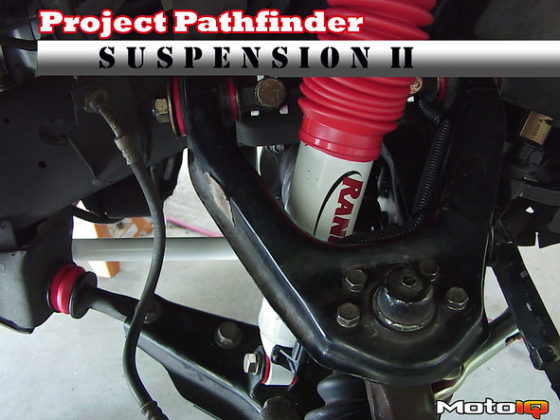
How to Make Your Own Effective Exhaust System
By Mike Kojima and Sarah Forst
You are bummed. You don’t own a Honda, STi, EVO or some sort of popular sport compact car. Maybe you have an old school Celica, Corolla, Cavalier, Neon, Hyndai, Geo, Saturn or a similar ride that does not have tons of aftermarket support. Maybe you want a spiffy all polished stainless system but can’t get a pre-made offering that you like. Maybe you do have a popular car but it has a ripping turbo system and no one makes a good pre made 3” system for your car. What to do? Well we will show you how to roll your own system that will be as good as, maybe even better than a commercially made system, probably for less money as well! Got a high powered naturally aspirated engine with cams with lots of overlap? Gotta feed the merged collector with a 3” exhaust or you are gonna lose some power and not too many 4-cylinder cars have pre-made 3” systems.
We will first get into and explain how the different parts of an exhaust work so you can choose the best pieces, then show you how you can build a high performance system with perhaps some help from your local muffler shop or a friendly local welder. No matter how small the town you live in is, you should still be able to get this stuff done.
Follow us in this article’s pictorial section on how we get a 3” all stainless steel system built for a 520 whp turbo powered Sentra SE-R. As no 3” pre-fabricated system is made for this car, we will have to build our own.
The Muffler
The key part of your exhaust system is the muffler. The muffler is the can at the end of your exhaust whose main purpose in life, is to make the engine noise quiet. To be the whisper quiet device that most car owners demand, a typical stock muffler must have an intricate and labyrinth-like internal flow path to help slow and cool the hot, vibrating with sound energy, exhaust gas. It contains baffles that cause the exhaust flow to reverse direction and intermix. These are great for reducing noise but are not so great for having good power unleashing flow. This is mostly because all the twists and turns that the exhaust must endure in a stock muffler are a restriction that causes excess backpressure. You can run in a straight line faster than you can run in a tight maze in a fun house right? The same goes for your exhaust gas.
 |
| Here is a typical stock muffler cut open. See how the baffles reverse the flow several times though chambers and force the flow to travel through wadding? Good to cut noise, bad for backpressure and ultimately, performance. |
To produce the most amount of power, an exhaust should have the least amount of restriction to the exhaust flow. Restriction hampers the burnt exhaust gasses from exiting your engine, causing some charge dilution with the incoming fresh fuel air mixture. If all the exhaust gas cannot escape from you cylinders, it dilutes the flammable power producing intake mixture that is trying to come in. The diluted mixture does not burn as well as a pure mixture. This causes a loss of power. You don’t feel so energetic at a packed club with lots of cigarette smoke, sweaty bodies and hot stuffy air right? Neither does your motor. With greater restriction, backpressure is generated making the engine work harder to pump the exhaust out of the engine's cylinders. The harder it is to get the exhaust out; the power wasted to pump the stale exhaust gas out of a restrictive exhaust system could be used to turn the wheels instead. Turbocharged, suspercharged, Nitrous Equipped and engines with really big cams are all especially sensitive to backpressure.
An old hotrodders tall tale is that engines need some backpressure to work properly and make torque. Well that is not true. What engines need is the lowest low backpressure possible but with a high exhaust stream velocity. A fast moving but free flowing gas column in the exhaust helps create a rarefaction or a negative pressure wave behind the exhaust valve right as it opens. This vacuum helps scavenge the cylinder of exhaust gas faster and more thoroughly with less pumping loss-inducing work. A too big in diameter exhaust pipe has low backpressure but lower velocity. The low velocity reduces the effectiveness of this scavenging effect, which has the greatest impact on low-end torque. So remember fast = low backpressure + high velocity. Slow=low backpressure=too big of an exhaust pipe=low velocity. Low backpressure also helps a turbocharger work more effectively.



